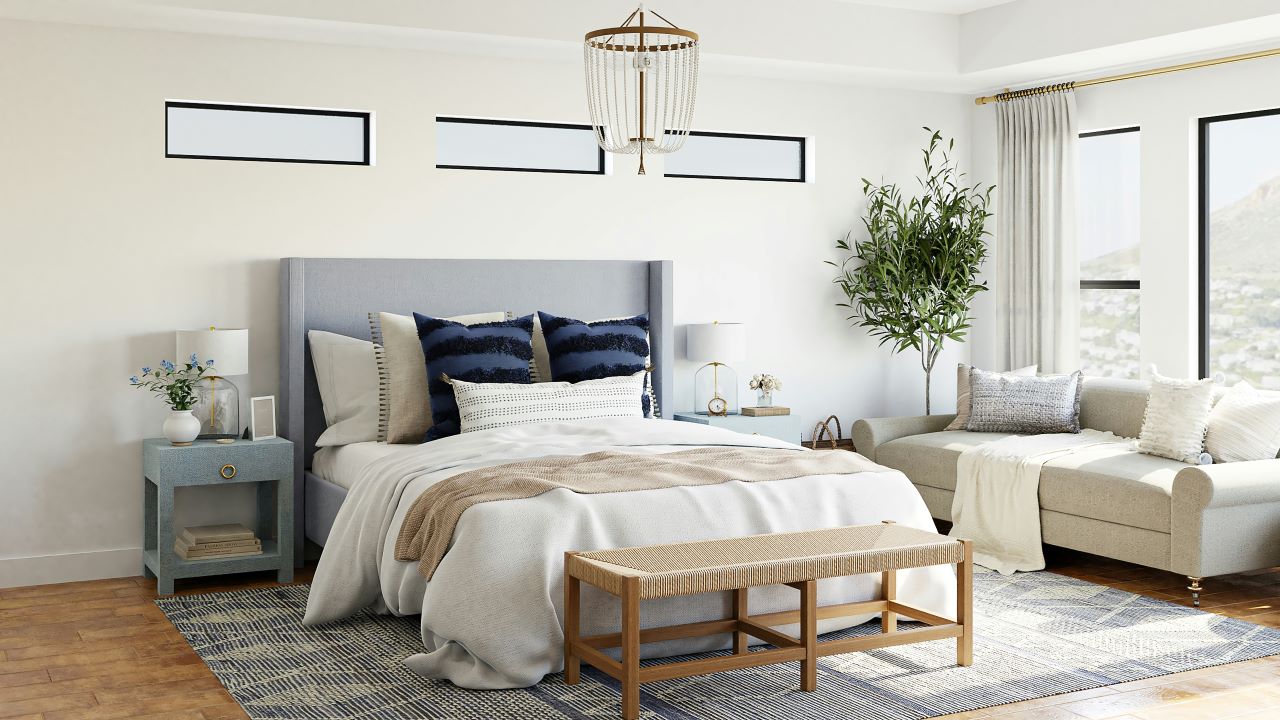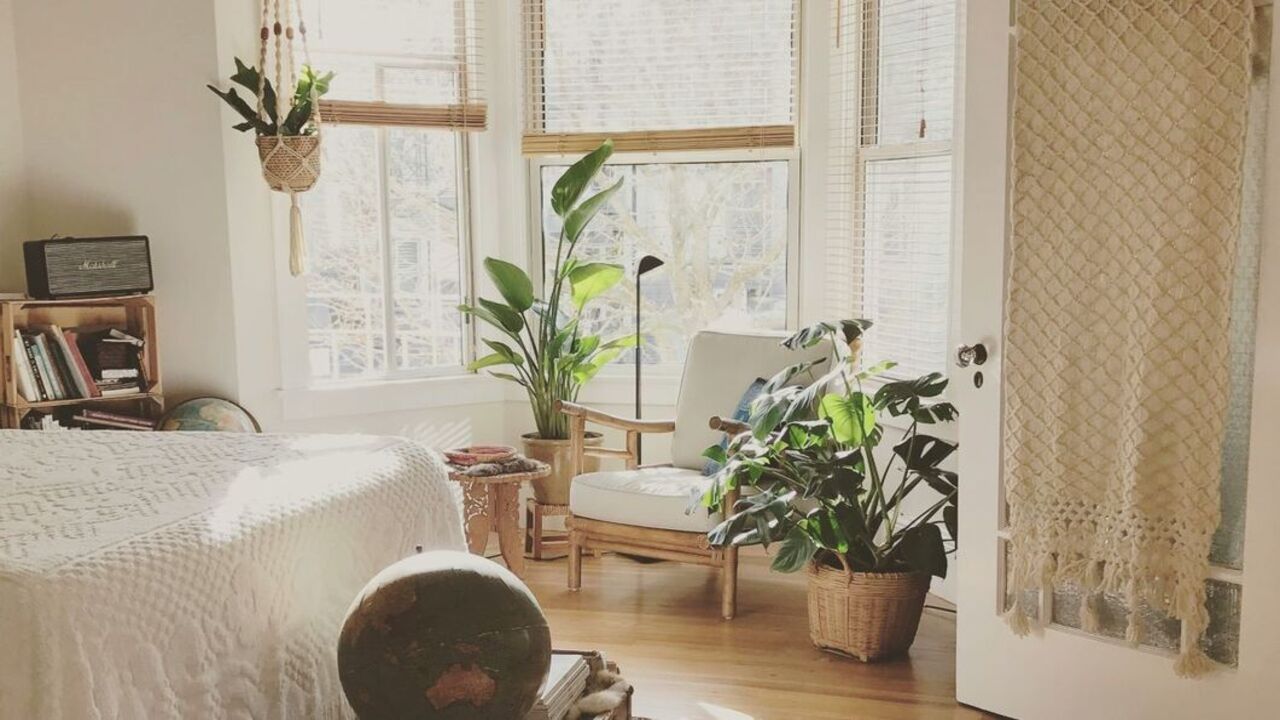In today’s urban environments, where access to nature can be limited, the trend of bringing the outdoors inside continues to gain popularity.
Adding plants to your bedroom not only enhances its aesthetic appeal but also promotes better air quality and a sense of tranquility.
For those who may not have a green thumb or much time to devote to plant care, there’s good news!
This guide presents a selection of low-maintenance plants that thrive in bedroom environments, requiring minimal attention while offering maximum benefits.
Benefits of Bedroom Plants
Plants offer a plethora of benefits beyond just visual appeal.
Firstly, they improve air quality by naturally purifying the air, absorbing toxins, and releasing oxygen, creating a healthier indoor environment.
Moreover, being around plants has been shown to lower stress levels and promote relaxation, making them ideal for fostering a calming bedroom atmosphere.
Lastly, plants add a touch of natural beauty and warmth to any space, transforming a dull bedroom into a lush sanctuary where you can unwind after a long day.

Considerations Before Choosing Bedroom Plants
Before selecting plants for your bedroom, there are a few factors to consider.
Assess the natural light levels in your bedroom to determine which plants will thrive best. Some plants prefer bright, indirect light, while others can tolerate low-light conditions.
Additionally, consider the available space in your bedroom and choose plants that fit well without overcrowding the room.
Lastly, if you or your household members have allergies, opt for plants with minimal pollen production to avoid exacerbating symptoms.
Top Low-Maintenance Bedroom Plants
- Snake Plant (Sansevieria trifasciata): This hardy plant thrives in low to moderate indirect light and requires minimal watering. It’s known for its air-purifying properties and ability to thrive in virtually any indoor environment.
- ZZ Plant (Zamioculcas zamiifolia): The ZZ plant tolerates low-light conditions but can also thrive in brighter light. It’s highly resilient and requires minimal maintenance, making it perfect for busy individuals.
- Pothos (Epipremnum aureum): Pothos plants thrive in low to moderate indirect light and require occasional watering. Known for its trailing vines and air-purifying qualities, it’s an excellent choice for hanging baskets or shelves.
- Peace Lily (Spathiphyllum): This elegant plant prefers moderate indirect light and consistently moist soil. It produces beautiful white flowers and helps remove toxins such as formaldehyde and benzene from the air.
- Spider Plant (Chlorophytum comosum) Known for its air-purifying qualities, the Spider Plant is easy to care for and produces baby spider plants, allowing you to propagate and expand your indoor garden.
- Aloe Vera: Beyond its aesthetic appeal, Aloe Vera offers medicinal properties, with its gel providing soothing relief for skin ailments. It thrives in bright indirect light and requires minimal watering.

Maintenance Tips for Bedroom Plants
To keep your bedroom plants looking their best, incorporate these maintenance tips into your routine.
Regularly wipe the leaves of your plants with a damp cloth to remove dust and keep them looking vibrant.
Additionally, prune away any yellowing or dead leaves to encourage healthy growth and prevent disease.
As your plants grow, consider repotting them into larger containers with fresh soil to provide ample space for their roots to expand.
Enhancing Ambiance with Natural Elegance
Styling plants in your room can elevate its ambiance and add a touch of natural elegance to your space.
Consider placing plants in strategic locations such as on bedside tables, shelves, or windowsills to create visual interest and balance.
Mix and match different plant heights, textures, and pot designs to add depth and personality to your room.
Hanging plants in macramé planters or geometric wall-mounted holders can also add a unique and eye-catching element to your decor.
Moreover, grouping plants together in clusters can create a lush, botanical focal point while incorporating trailing vines can add a sense of movement and whimsy to the room.
Remember to consider the overall aesthetic of your room and choose plants and styling elements that complement your existing decor for a cohesive and inviting space.

Indoor Plant Display Ideas
| Display Idea | Description |
|---|---|
| Hanging Planters | Utilize ceiling hooks or wall-mounted brackets to suspend plants in decorative hanging planters or baskets. |
| Window Sills | Place plants on window sills to benefit from natural light. Use a mix of trailing and compact plants for variation. |
| Shelving | Arrange plants on shelves to create a layered display. Mix and match plant heights and pot sizes for visual interest. |
| Plant Stands | Elevate plants using plant stands or pedestals to add height and dimension to the display. |
| Terrariums | Create miniature indoor gardens in glass terrariums, showcasing small succulents or air plants. |
| Wall-mounted Planters | Install wall-mounted planters to save space and add a vertical element to your indoor plant display. |
| Grouping | Cluster plants together in groups of varying sizes and heights to create a lush and cohesive display. |
| DIY Plant Hangers | Get creative with DIY plant hangers made from macrame, rope, or repurposed materials for a personalized touch. |
| Plant Ledges | Utilize built-in ledges or install floating shelves to display plants along walls or room dividers. |
| Tabletop Gardens | Arrange plants on tables, dressers, or nightstands to bring greenery into your living space. |
Frequently Asked Questions (FAQs)
What should I do if my plants start to look unhealthy?
Check for signs of overwatering, underwatering, or pests. Adjust watering frequency accordingly and consider repotting if the plant has outgrown its container.
Can I place plants in my bedroom if I have allergies?
Yes, you can still enjoy the benefits of indoor plants by choosing varieties with minimal pollen production, such as peace lilies or spider plants.
How can I prevent my plants from outgrowing their space in the bedroom?
Regularly prune your plants to control their growth and consider repotting them into larger containers as they grow.
Can I use artificial plants instead of real ones in my bedroom?
While artificial plants require no maintenance, they do not offer the same air-purifying benefits or natural ambiance as real plants.
However, if you have limited access to natural light or struggle with plant care, high-quality artificial plants can still enhance the aesthetic of your bedroom.
Conclusion
- Bringing low-maintenance greenery into your bedroom is a simple yet impactful way to enhance your living space and promote a sense of well-being.
- Whether you’re a seasoned plant enthusiast or a beginner, selecting plants that thrive indoors and require minimal care allows you to enjoy the beauty and benefits of nature without the stress of high maintenance.
- From improving air quality to reducing stress levels and enhancing the aesthetic appeal of your room, these plants serve as natural companions that bring life and freshness indoors.
- By incorporating the provided tips, considerations, and maintenance advice, you can confidently select and style plants in your bedroom.